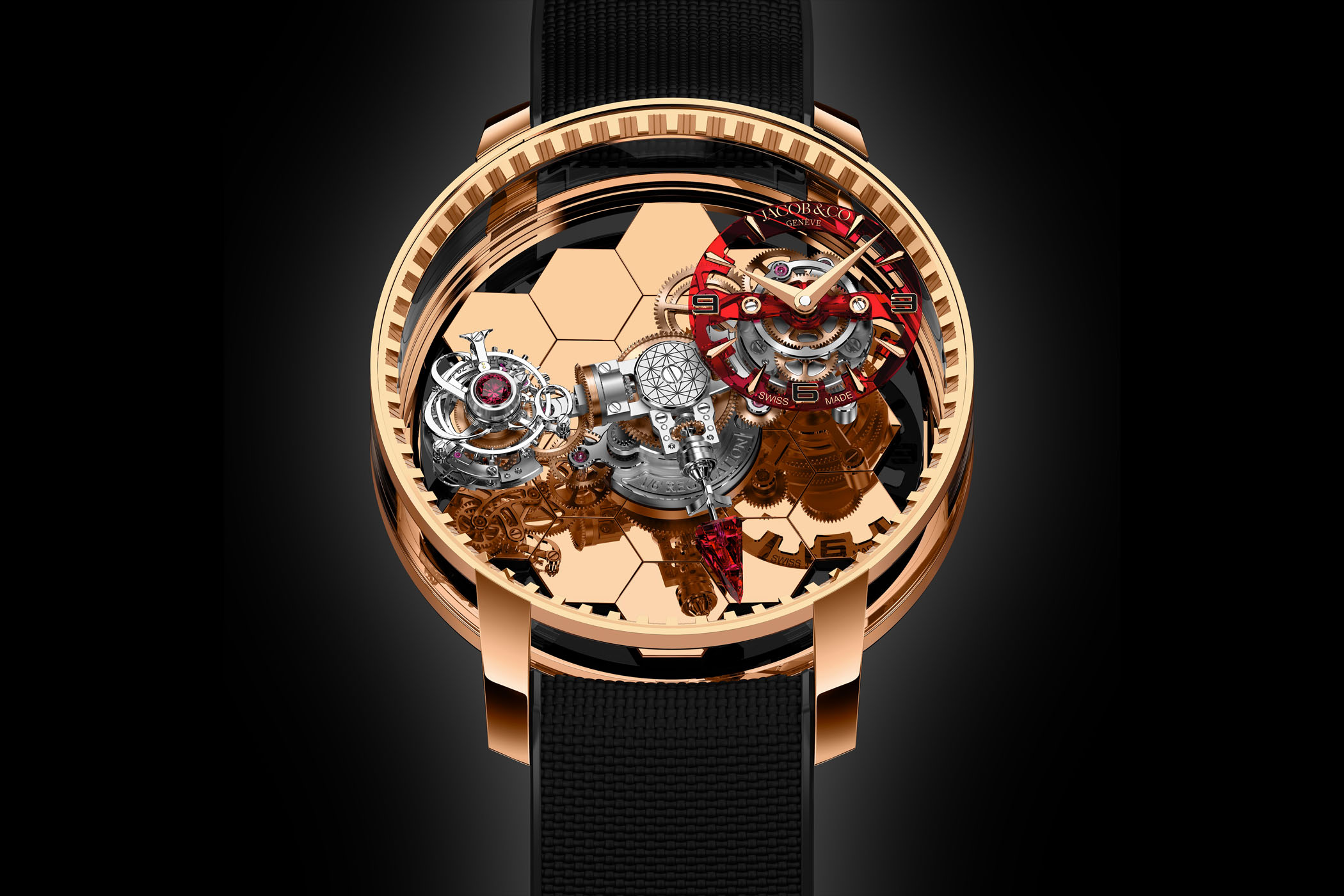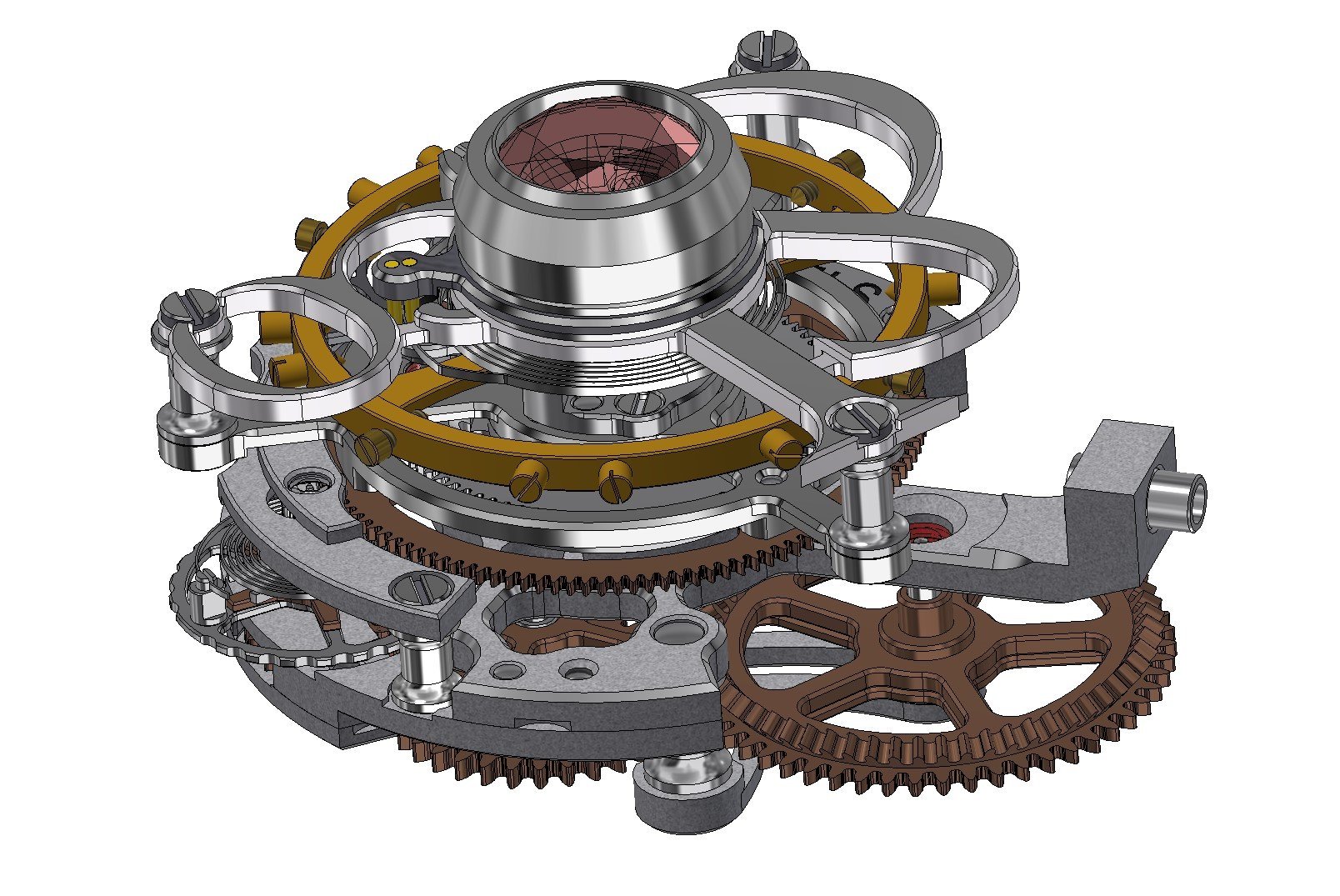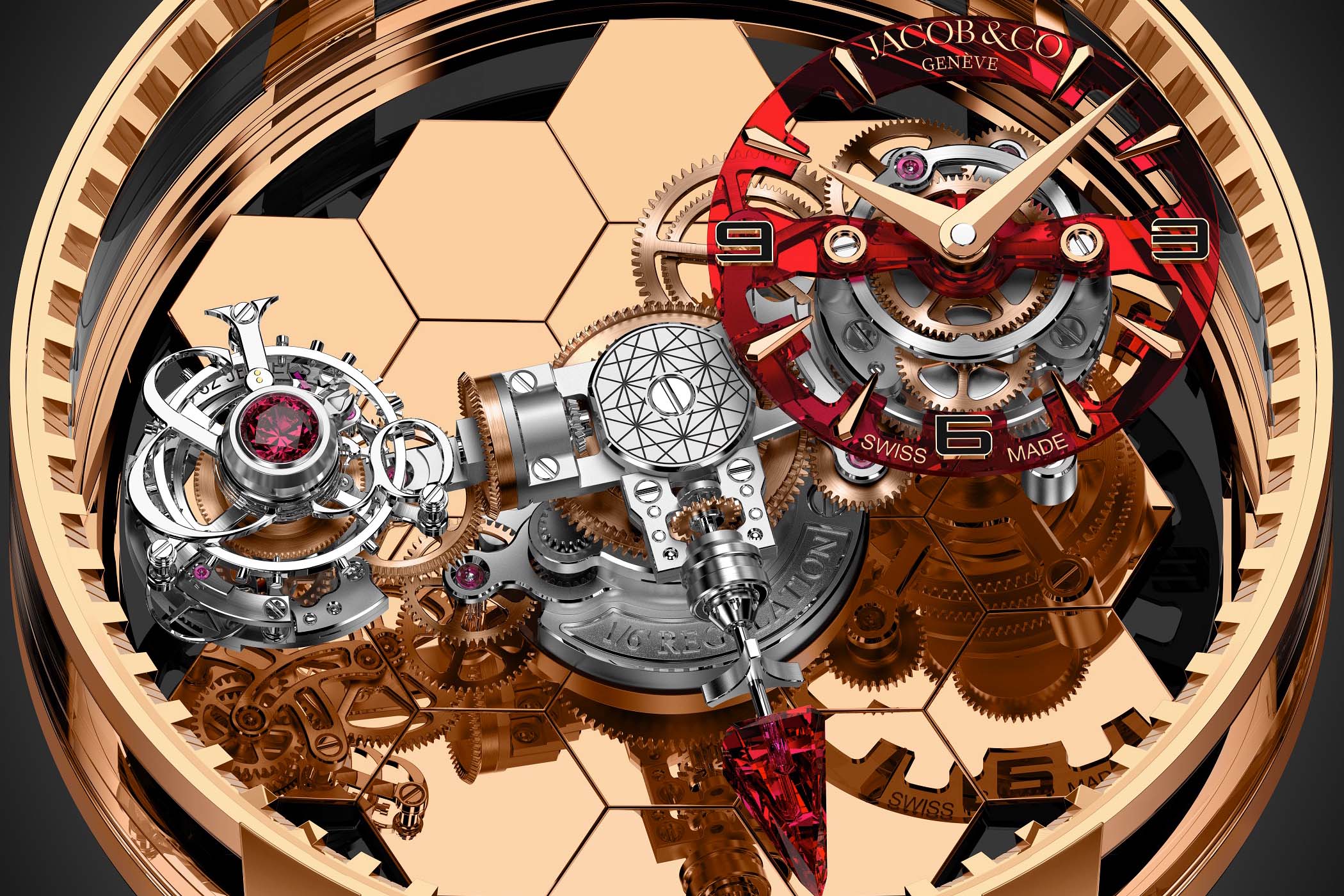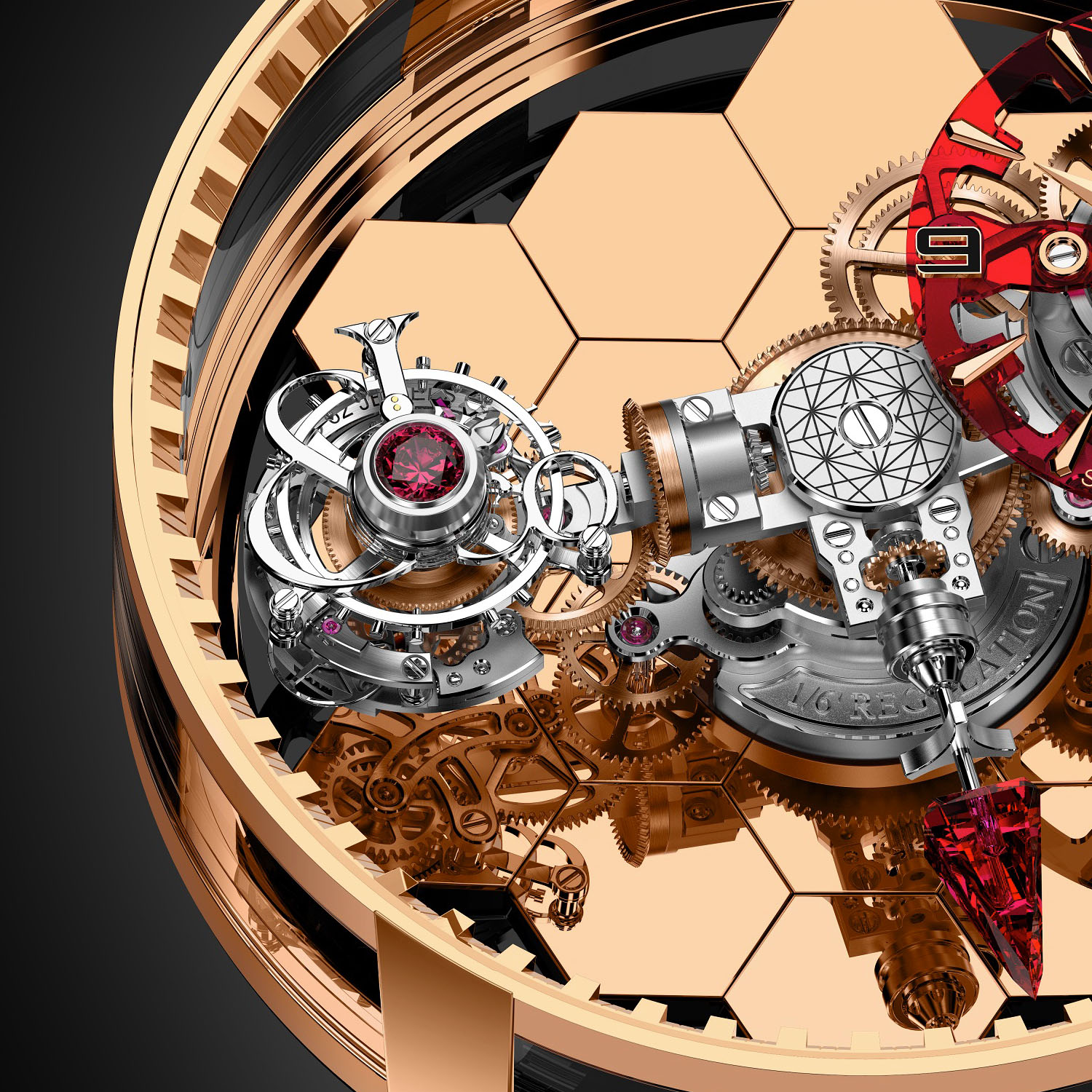The Ultra-Fast Rotating Movement of The New Jacob & Co. Astronomia Revolution
The crazy Astronomia on fast orbit…

Jacob & Co. has managed to create some of the wildest, craziest and most complicated watches in recent years. Among these is the Jacob & Co. Astronomia. This signature design has given rise to a saga that started in 2014 with countless executions featuring various technical refinements or background sceneries. This uber-complicated timepiece was originally created to stage a poetic rendering of the celestial world, looking like some type of wrist orrery if you wish. With it, every element is in constant motion: the movement rotates on itself and drives arms bearing different functions, including a flying tourbillon regulator pacing the mesmerizing ballet. The Jacob & Co. Astronomia started at one rotation every 20 minutes, then pushed the speed at one every 10 minutes and even one every 5 minutes! The Astronomia Revolution takes the concept to the next level and breaks all records with an ultra-fast 1-minute rotation.
“We’ve been grooming the Astronomia movement for eight years now, says CEO Benjamin Arabov. It started at the already incredible speed (at the time) of one revolution every 20 minutes. It’s unique, unheard of, and not just an evolution of Astronomia. This piece has been reworked from the ground up. It required revolutionary mechanics, inventions and what we at Jacob & Co. are driven by. Astronomia Revolution is “Inspired by the Impossible”, and we made it possible.”
Breaking the speed limit
This high-speed one-minute revolution makes the latest Astronomia even more spectacular timepiece in terms of design and technical complexity. The kinetic 3-D movement also drives a double-axis flying tourbillon (rotating respectively in 1 minute and 15 seconds and making for a triple-axis tourbillon taking into account the rotation of the movement every minute). A second arm holds a skeletonized translucent red dial showing the hours and minutes. And as the movement rotates in 1 minute, a third arm shows “de facto” the seconds with a ruby pointer rotating on itself in 15 seconds. A matching minute track is carved into the bezel with 60 angular notches. If it is quite difficult to envision, the following animation will give an idea of this truly mesmerizing spectacle.
A marvel of time in motion
This mechanical microcosm is housed in an impressive case measuring 47mm in diameter and 27mm thick. It is protected under a highly domed sapphire crystal with an anti-reflective coating. A veritable technical feat, the case is fashioned out of gold and features several sapphire crystal windows allowing you to admire the circumvolutions of the ever-changing movement from different angles. And, as is the tradition with the Jacob & Co Astronomia, it features no visible crown. The movement is wound and set via two flip-up keys at the rear of the watch.
The view of the movement is further enhanced by the architecture by a plate covered with 18 5N rose gold honeycomb mirrors, reflecting its intricacies. Each gold mirror is polished to the highest degree and slightly tilted at a very precise angle. This array was inspired by those found on one of the greatest astronomic tools designed in recent history: the James Webb Space Telescope.
Taming power – high-frequency remontoire
The uber-complex hand-wound movement inside the watch is the calibre JCAM48B. 42.30mm in diameter, it ticks at 21,600 vibrations per hour with 36 hours of power reserve – which leads us to one of the main technical challenges: power management!
One of the main technical difficulties with the Astronomia timepieces has always been to power the movement and perfectly poise the mobiles at the extremity of each of the arms. The Astronomia Revolution takes the concept to the next level of complexity. To deliver the impressive power to drive its super-fast rotation, the movement must be able to store a huge amount of energy. This is made possible by the use of two large barrels. But handling such a powerful force is easier said than done.
First, it needs to be as consistent as possible. Indeed, the force delivered by the barrel(s) in a watch is irregular. Strong torque is provided when it is fully wound, then it slowly wanes throughout the power reserve duration. This affects the rate of watches because balance wheels are not perfectly isochronous. This led Jacob and Co to design a mechanism aiming at equalizing the force of the mainsprings. This was key to ensuring a consistent rate and, in turn, maintaining a smooth, regular rotation for the movement’s platform every minute.
To do so, the Astronomia Revolution uses a very special remontoire mechanism, built-in the tourbillon cage, for which a patent is being applied. Remontoire mechanisms store a small amount of equal energy in a spring in order to deliver it at regular intervals (usually in one-second increments at the most). Here, the remontoire works at an unprecedented frequency of 6 times per second, meaning at each vibration of the balance wheel! It is based on a whip and “remontoire escapement wheel”. The whip is freed at each vibration by this wheel, and, in turn, it releases the winding wheel of the remontoire spring for the next cycle.
Availability & Price
The Jacob and Co Astronomia revolution is worn on a black Cordura strap and is secured to the wrist by a gold folding buckle. It is released in a limited edition of 18 pieces, 6 in rose gold, 6 in white gold and 6 in black PVD-white gold. The price for this impressive timepiece is set at USD 600,000. Obviously, if it won’t be for every pocket, this is another demonstration that nothing is too far-fetched at Jacob & Co. The spectacle is always guaranteed!
For more information, please visit www.jacobandco.com.








